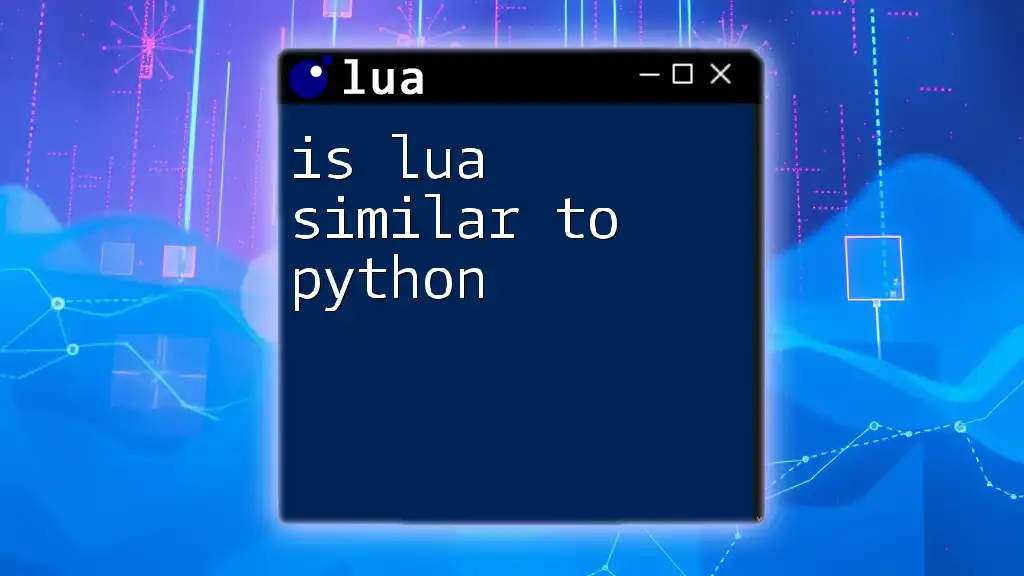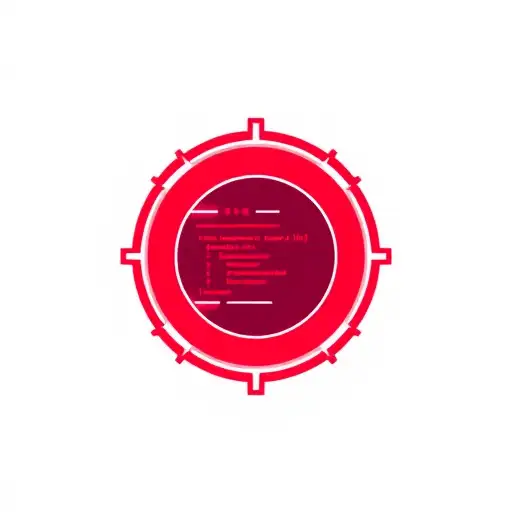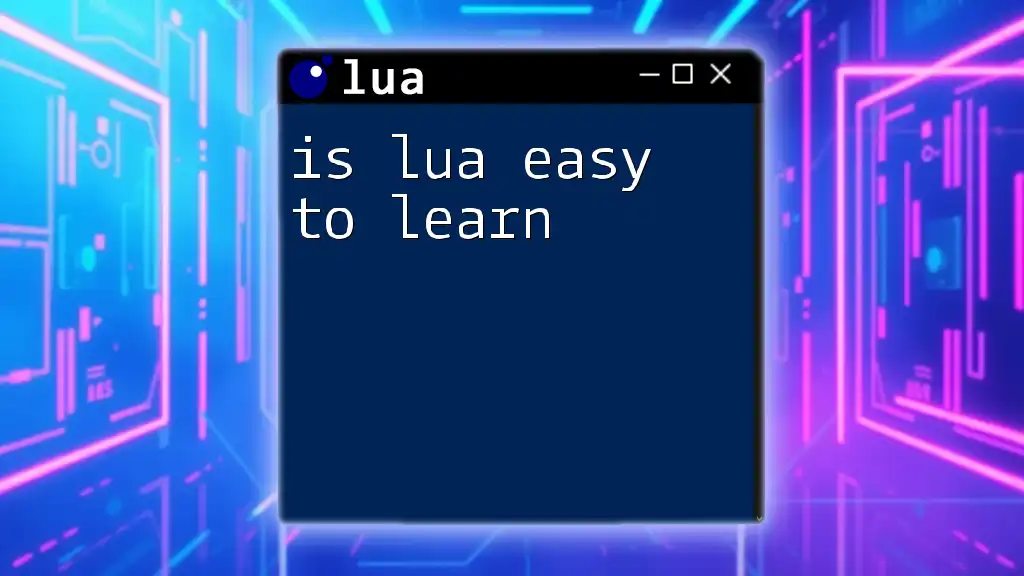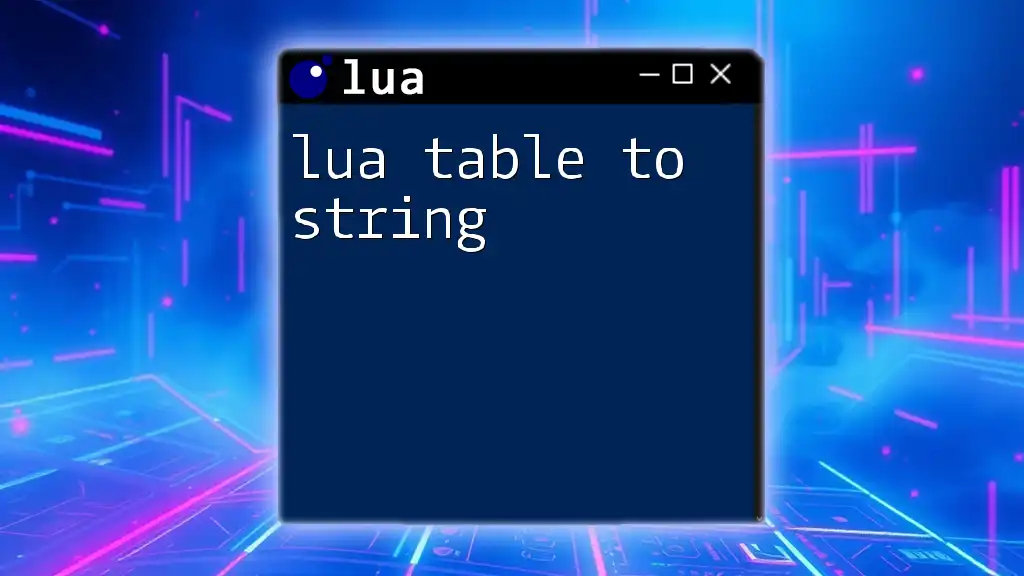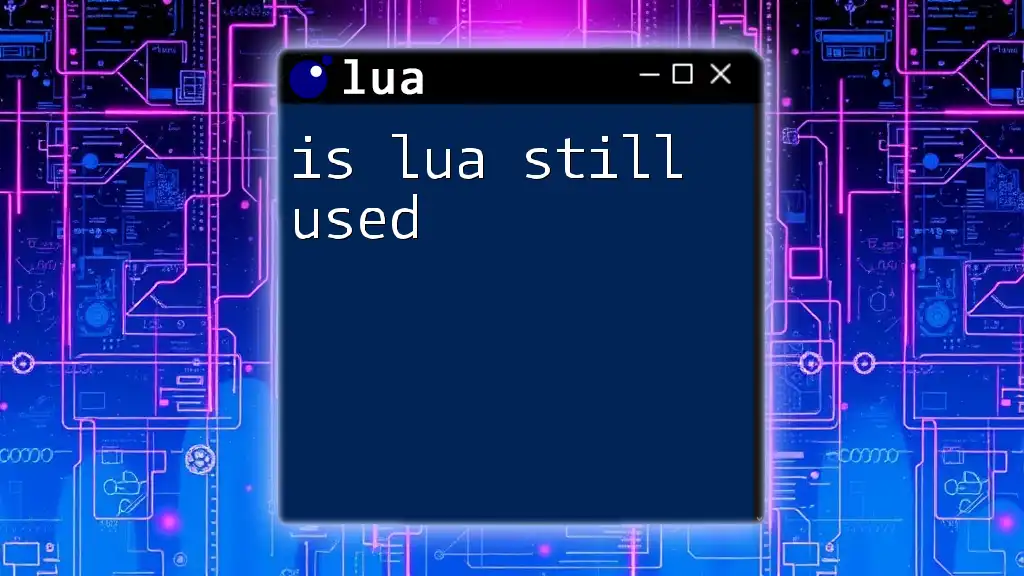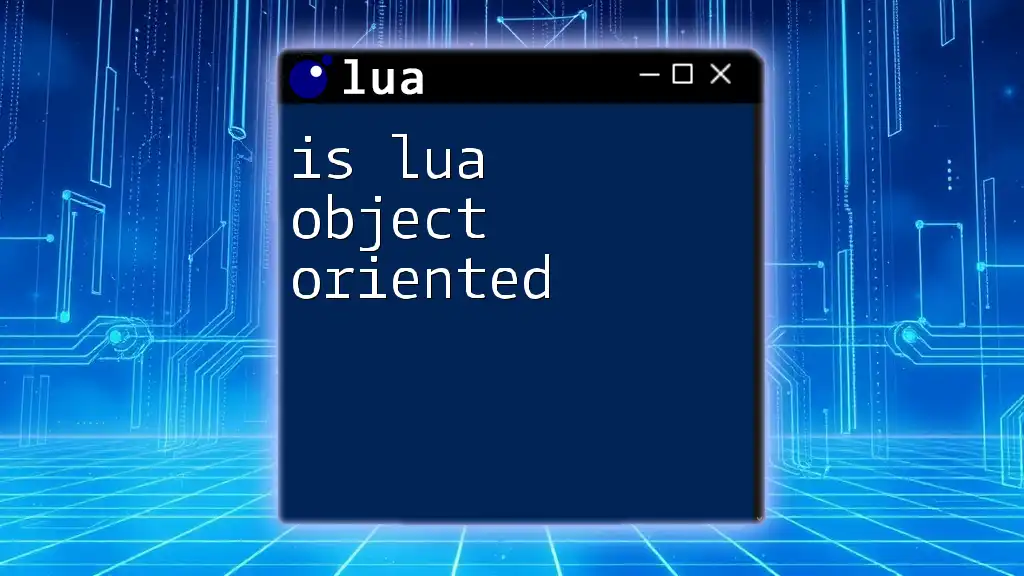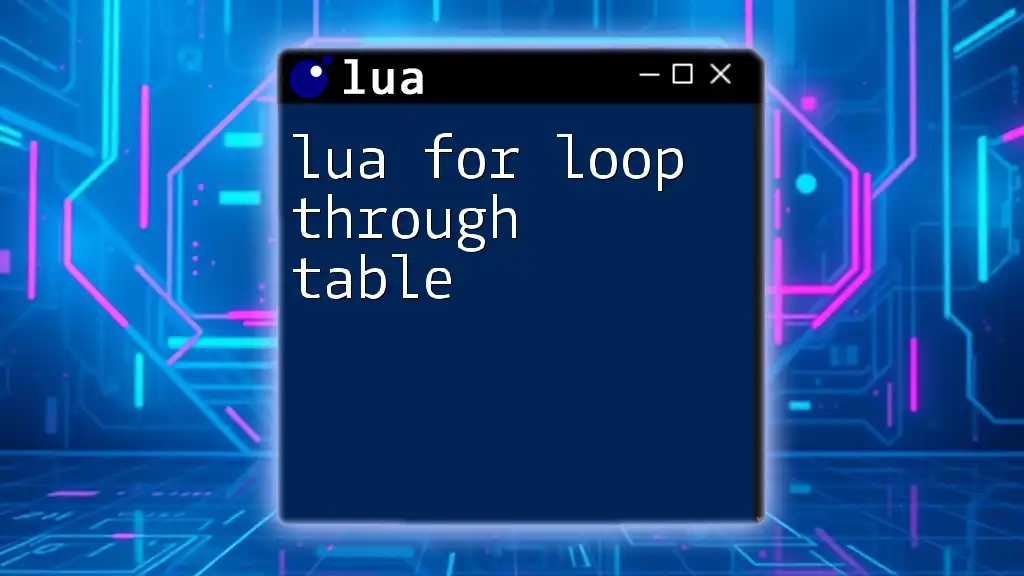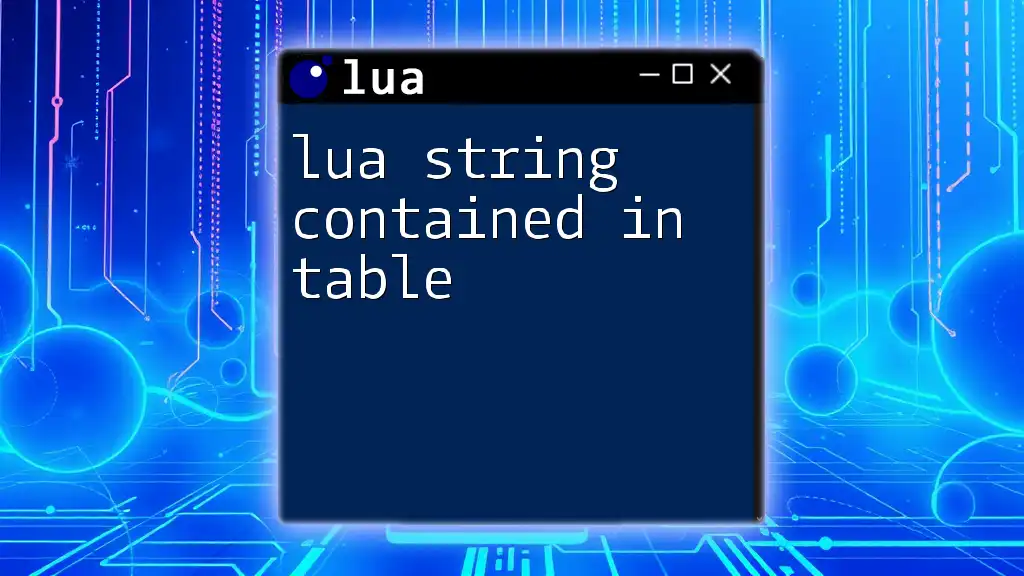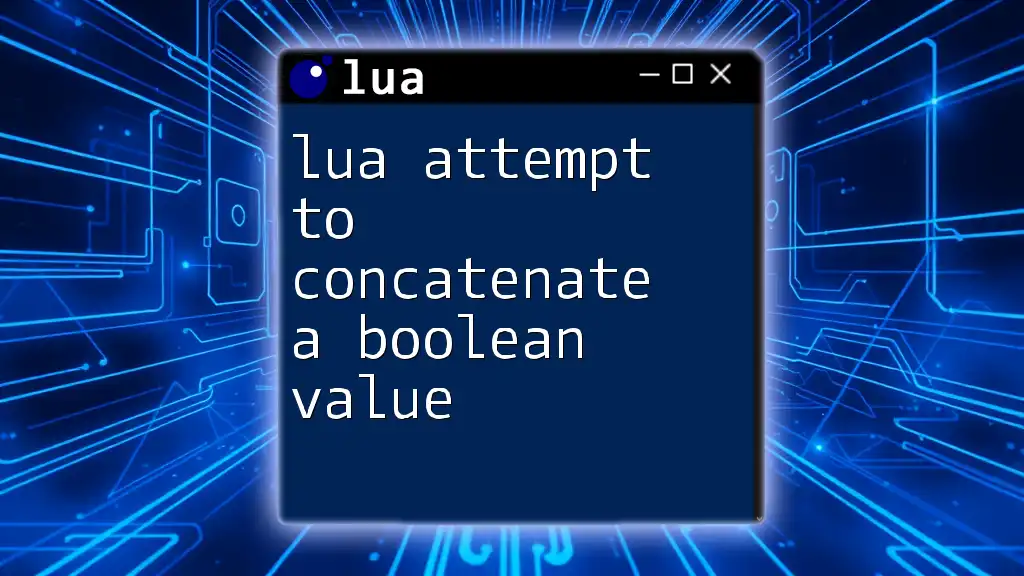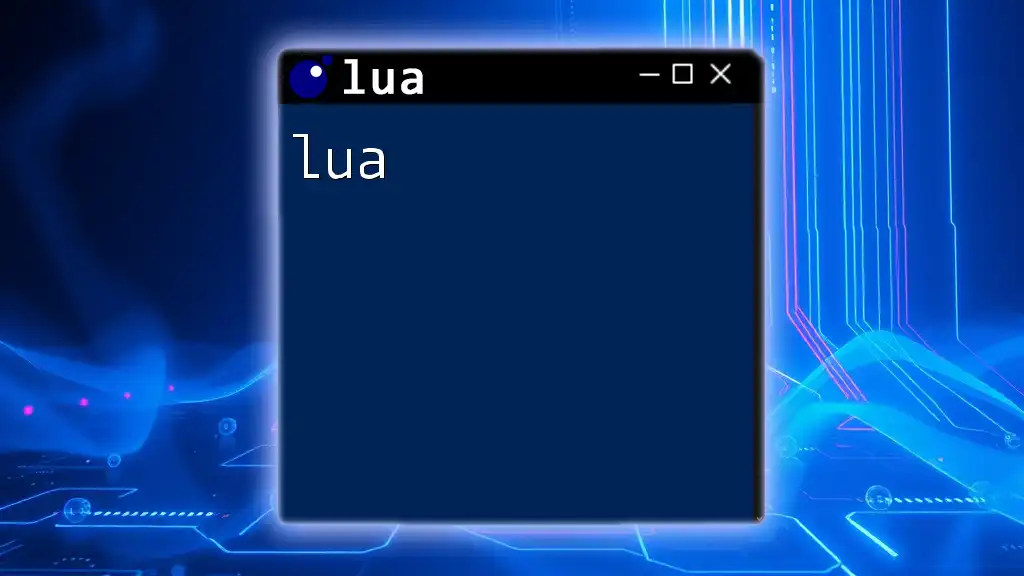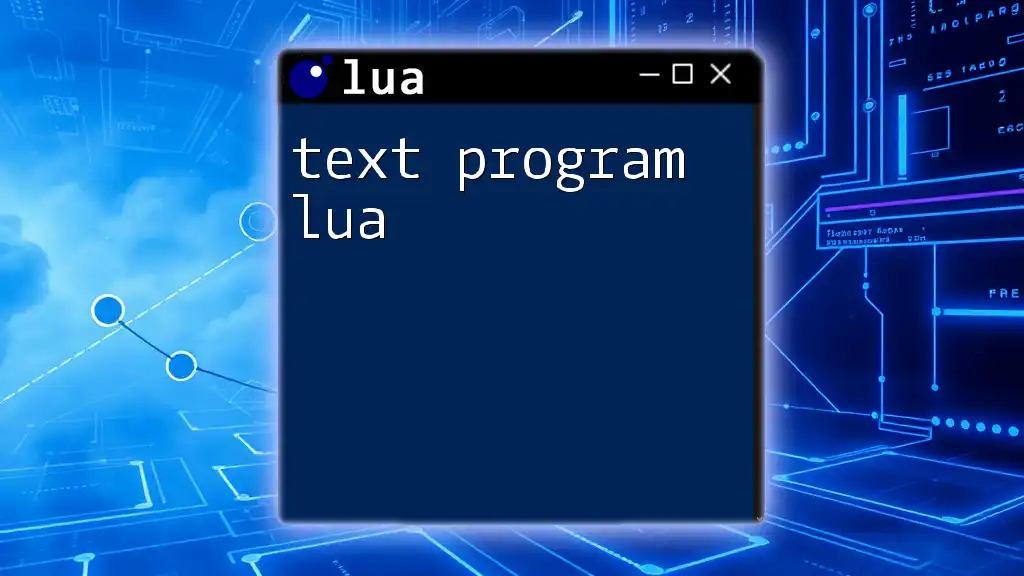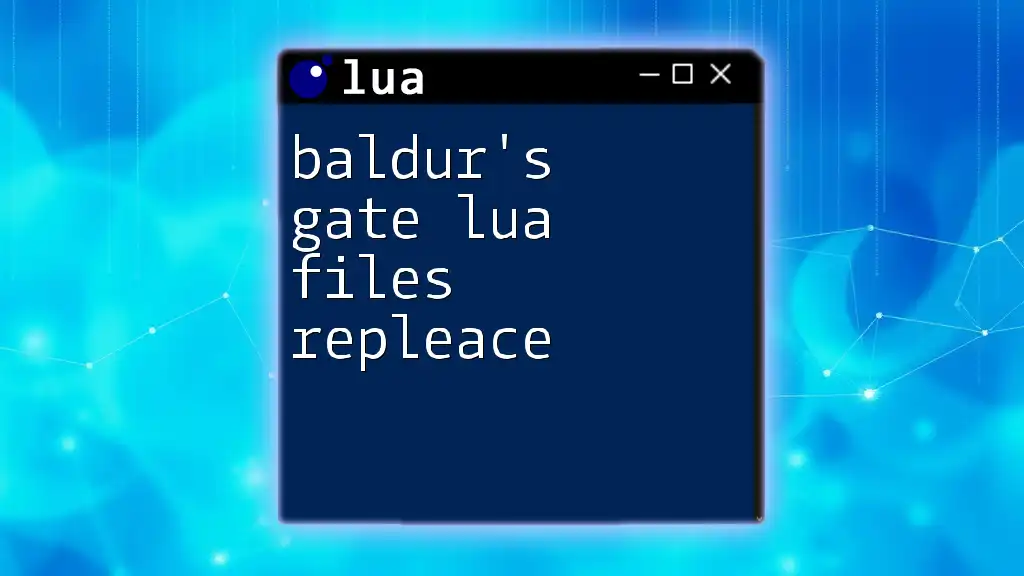Lua and Python are both high-level, interpreted programming languages that emphasize simplicity and readability, but they differ significantly in syntax and application domains.
Here's a brief comparison using a simple variable assignment example in both languages:
-- Lua example
local greeting = "Hello, World!"
print(greeting)
# Python example
greeting = "Hello, World!"
print(greeting)
Background of Lua and Python
Overview of Lua
Lua is a lightweight, high-level programming language developed in the early 1990s in Brazil. It is renowned for its simplicity and flexibility, making it particularly well-suited for embedded systems and game development. Lua's design emphasizes ease of integration with other languages, which is why it's frequently used as a scripting language in gaming engines and applications, such as the popular game development framework LOVE.
Overview of Python
Python, released in 1991 by Guido van Rossum, has gained immense popularity due to its readability and versatility. It's widely used across various domains, including web development, data science, artificial intelligence, and automation. Python's extensive library ecosystem and large community support make it an ideal choice for both beginners and experienced programmers.
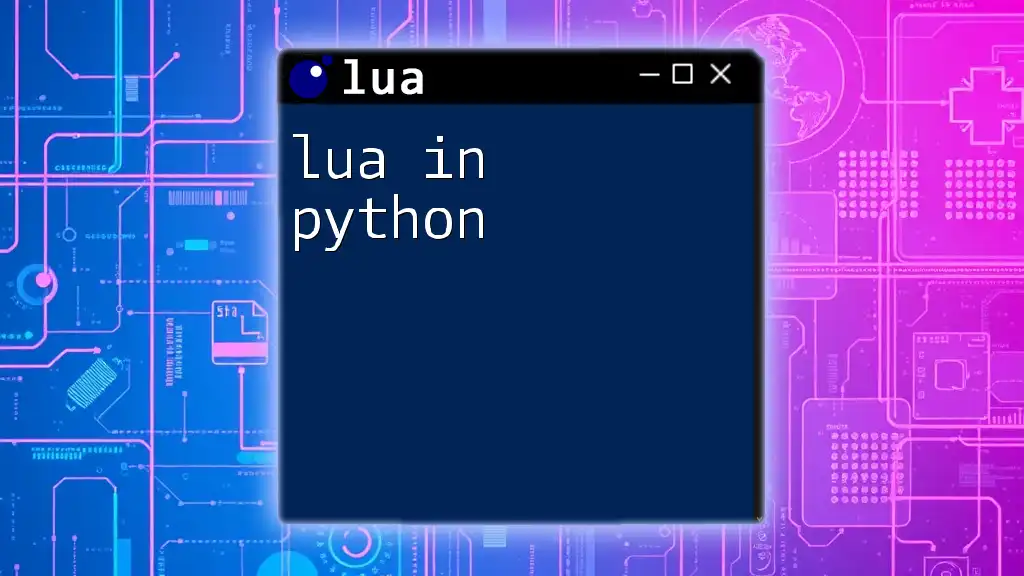
Syntax Comparison
Basic Syntax
Both Lua and Python prioritize clean and readable syntax, making them appealing for new programmers.
In Lua, a simple print statement looks like this:
print("Hello, Lua!")
In Python, the same command would be written as:
print("Hello, Python!")
Although they achieve the same goal of displaying output, the syntax differs slightly but remains straightforward in both languages.
Variables and Data Types
Variable Declaration
In Lua, variables can be declared implicitly or explicitly. For example, an implicit declaration would look like this:
myVar = 10 -- Implicit
An explicit declaration using `local` for variable scope would be:
local myVar = 20 -- Explicit (local)
In contrast, Python only allows implicit declarations:
my_var = 10
Data Types Overview
Both languages feature common data types such as numbers, strings, tables (Lua) or lists (Python), and booleans. Understanding how to create and utilize these data types is crucial for any programming task.
For instance, in Lua, you can create a table with:
myTable = {1, 2, 3, "Lua"}
In Python, you would use a list:
my_list = [1, 2, 3, "Python"]
Control Structures
Conditional Statements
Conditional statements allow programmers to implement decision-making logic. Both Lua and Python have similar constructs, but with slight syntax differences.
Lua employs the following structure for an if-else statement:
if x > 10 then
print("X is greater than 10")
else
print("X is less than or equal to 10")
end
Conversely, in Python, the same logic is expressed as:
if x > 10:
print("X is greater than 10")
else:
print("X is less than or equal to 10")
This showcases the readability of both languages, although Python uses colons and indentation instead of keywords like `then` and `end`.
Loops
When it comes to looping through a collection of items or executing a set of statements multiple times, both languages provide constructs to achieve this.
Here’s how a for loop would look in Lua:
for i = 1, 10 do
print(i)
end
In Python, the equivalent would be:
for i in range(1, 11):
print(i)
Both loops deliver the same functional outcome while demonstrating the subtle differences in syntax.
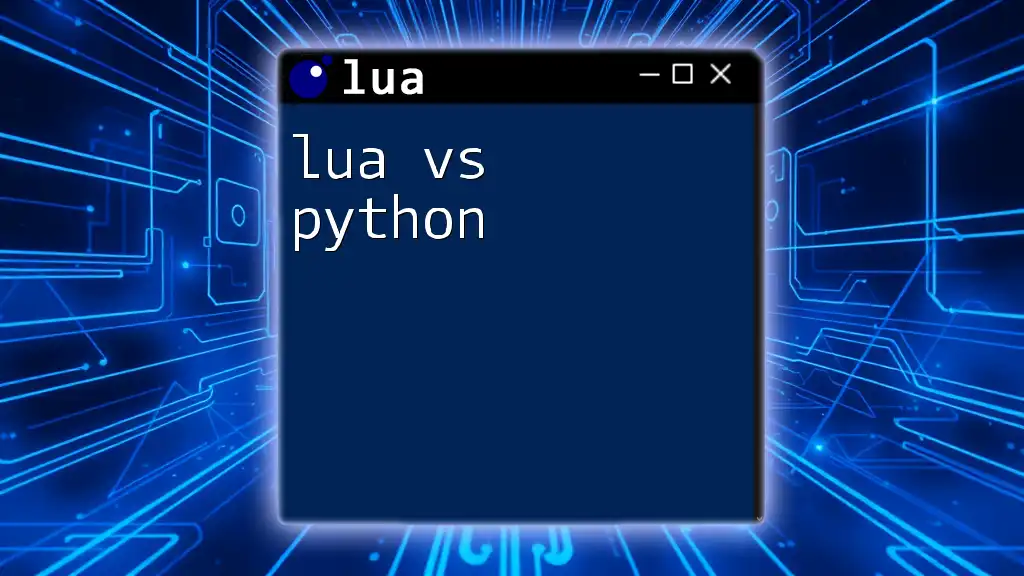
Object-Oriented Programming (OOP)
OOP Concepts in Lua
Lua supports object-oriented programming, albeit in a more manual fashion compared to Python. You define "classes" as tables and use metatables to manage inheritance. Here’s a basic example:
Dog = {}
function Dog:new(name)
obj = {name = name}
setmetatable(obj, self)
self.__index = self
return obj
end
OOP Concepts in Python
Python embraces OOP principles more formally with native class constructs. A simple class definition in Python looks like this:
class Dog:
def __init__(self, name):
self.name = name
Comparison of OOP Implementation
The implementation of OOP in Python is inherently more straightforward, featuring built-in support for encapsulation, inheritance, and polymorphism. In contrast, while Lua allows OOP, it requires a deeper understanding of tables and metatables, which can be less intuitive for new programmers.
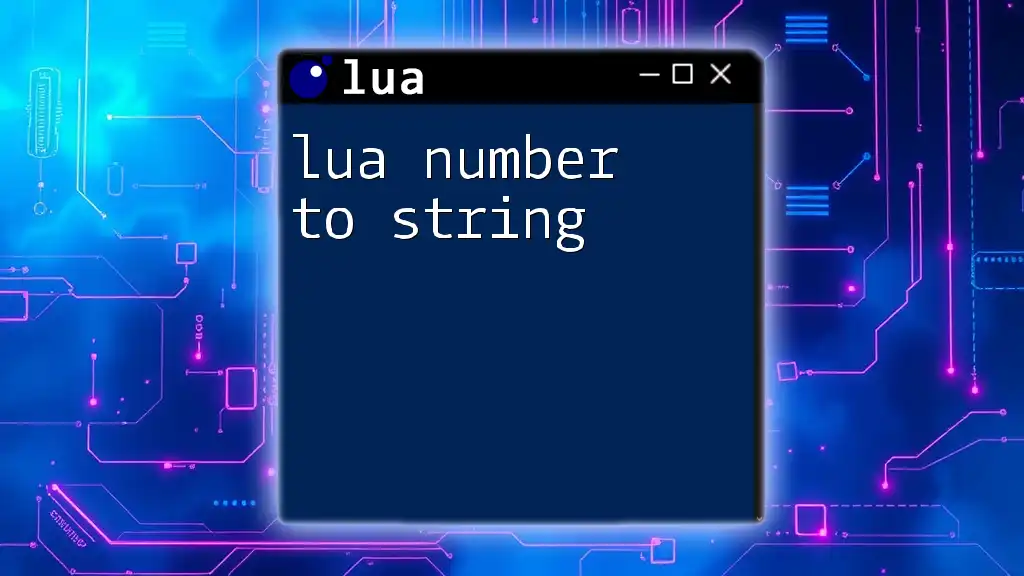
Libraries and Ecosystem
Lua Libraries
Lua has a variety of libraries designed to extend its capabilities, particularly for game development and scripting. Notable libraries such as LÖVE (for 2D game development) and LuaSocket (network communications) provide essential tools for developers working within the Lua environment.
Python Libraries
Python's strength lies in its vast library ecosystem, with libraries like Pandas and NumPy for data manipulation, Flask and Django for web development, and TensorFlow for machine learning. This availability of specialized libraries significantly enhances Python's capabilities across different domains.
Community and Support
When comparing the communities, Python boasts a larger and more diverse base, offering extensive resources in forums, tutorials, and documentation. Lua, while smaller, has a committed community that provides support specific to game development and embedded systems.
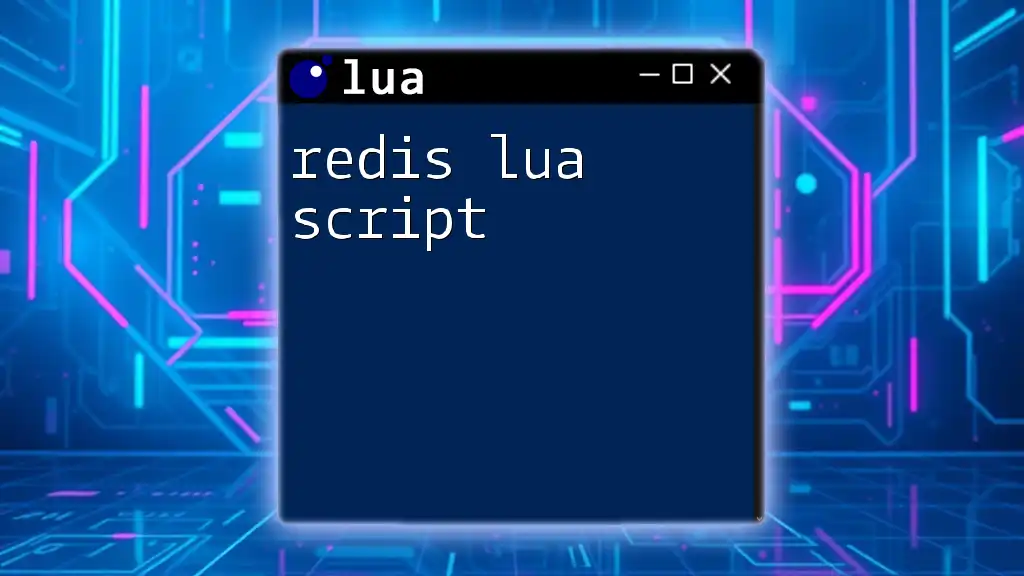
Performance and Efficiency
Speed Comparison
Lua is often cited for its speed, particularly in scenarios demanding high performance, such as game development. It excels in scenarios where rapid execution is critical. On the other hand, Python, while slower for certain tasks, often prioritizes developer productivity and code readability over raw performance.
Memory Management
Both languages use automatic garbage collection, but there are differences in their approaches. Lua provides a concise and efficient memory model, allowing for fine-tuning of garbage collection, which can be crucial in memory-constrained environments. Python's garbage collector, while effective, may not provide the same level of performance predictability in high-load applications.
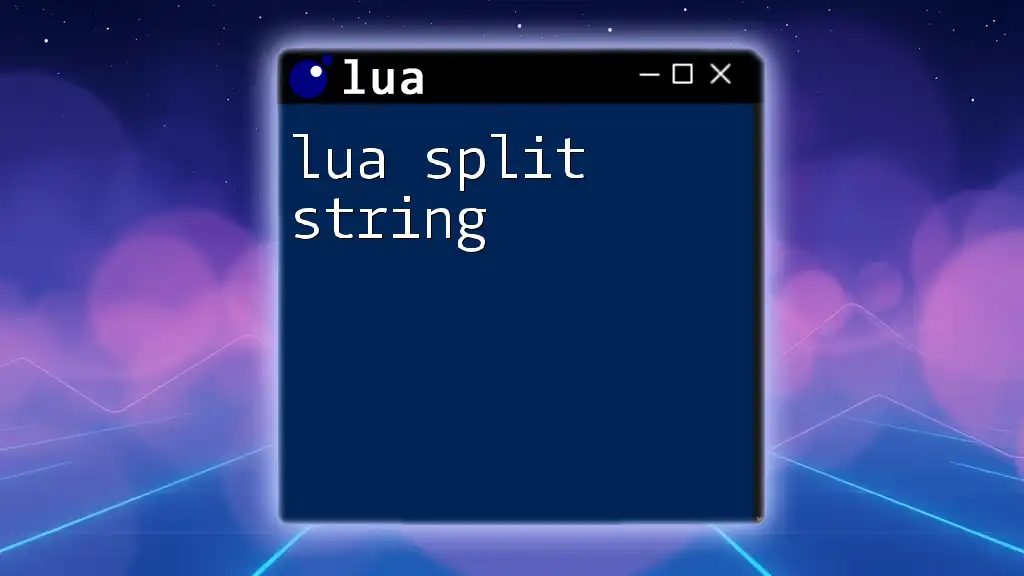
Conclusion
In summary, while Lua and Python have distinct philosophies and applications, they share fundamental similarities in syntax and programming paradigms. Lua shines in scenarios that require speed and integration, especially in gaming, whereas Python excels in versatility and community support across various domains.
Ultimately, the choice between Lua and Python should reflect the specific requirements of the project and the preferences of the developer. Each language brings its strengths and weaknesses to the table, inviting exploration and experimentation from learners and professionals alike.
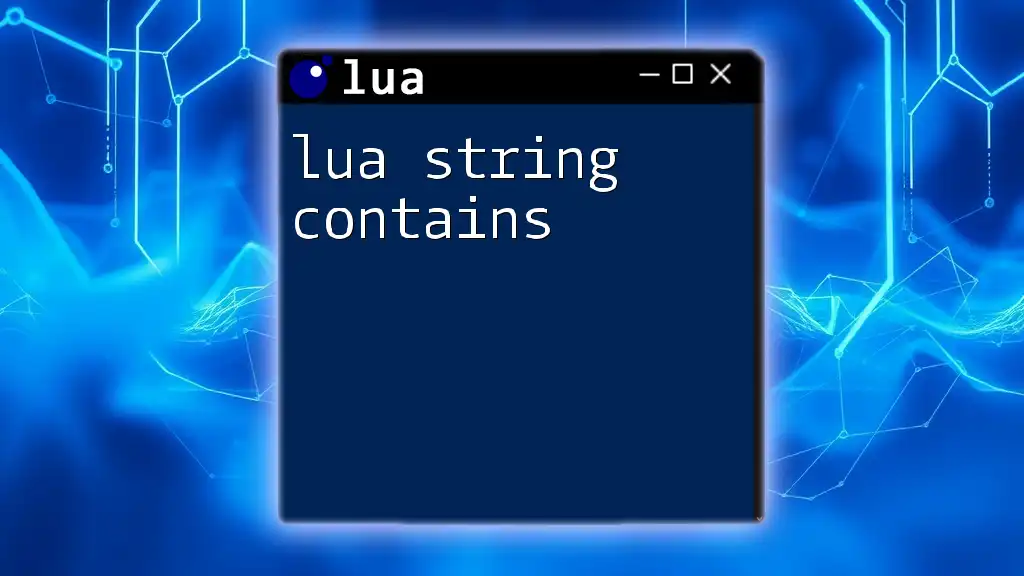
Additional Resources
For those looking to dive deeper into either language, a wealth of tutorials, books, and online courses are available. The official Lua and Python documentation serves as an excellent starting point for both experienced developers and newcomers eager to enhance their coding skills.

